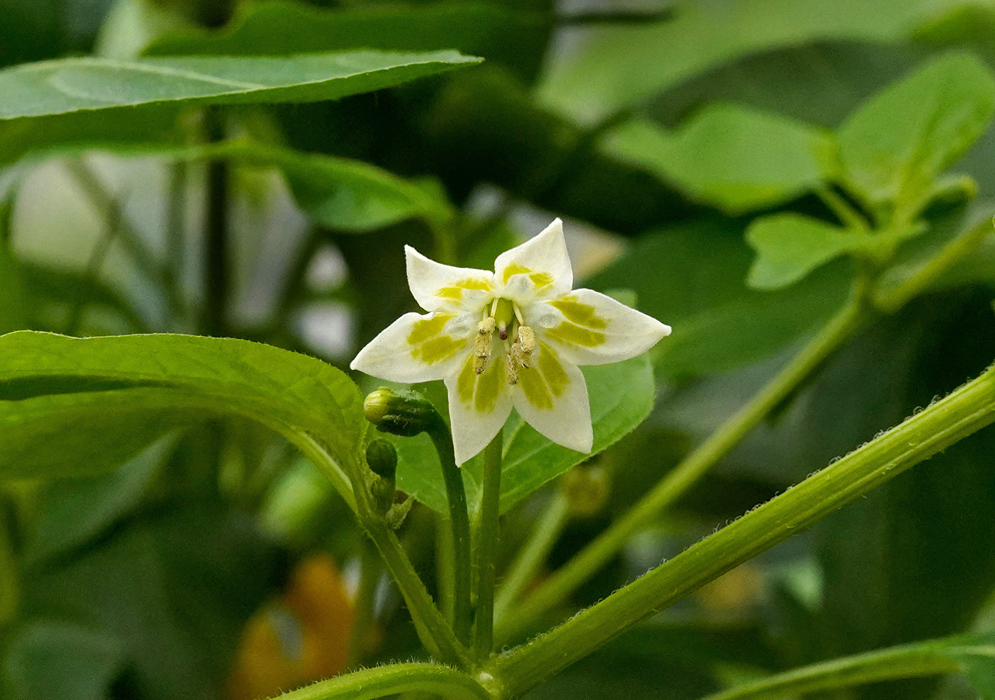This post has 11 Simple Fields-fields attached. Show fields.

Native to western South America, it grows as a short-lived perennial shrub, usually 2–5 ft tall, in cultivated plots and along disturbed edges. The primary common name for the domesticated form is ají amarillo (most commonly the variety pendulum), a staple chile in Peruvian cuisine that is also sold dried or as pastes and purees; outside the Andes it is increasingly grown both for food and as an ornamental due to its reliable fruiting under long days. The flower provides an easy field character: five white petals each bear conspicuous yellow-green “maculations” arranged near the throat, a diagnostic trait used by botanists to distinguish this species from other cultivated chiles; blooms are about 0.4–0.6 in across, with a short green calyx and anthers that remain pale rather than deep purple. Fruits of the domesticated forms vary in heat but often have a citrus-like flavor prized for sauces such as ají de gallina and causa; common garden selections include ‘Aji Amarillo’, ‘Aji Cristal’, ‘Bishop’s Crown’, and ‘Lemon Drop’, the last known for bright yellow pods on compact plants. Beyond food use, the capsaicinoids extracted from peppers—including this species—are employed in standardized topical creams for temporary relief of nerve pain. Photographed in Virgina.

